In the hours after the Christchurch massacre, a few simple images started to fill our Instagram feeds. In one, a kiwi bowed its head in sorrow, tears puddling at its feet. Another showed a koala hugging a kiwi, eyes closed, with a single tiny heart floating in the space above them. Here at PRIMER, we shared an illustration by Wellington-based illustrator Ruby Jones of two women – one wearing a hijab – holding each other, with a caption at their feet. ‘This is your home and you should have been safe here,’ it said.
These simple, striking images have now been shared by tens of thousands of people, and seen by millions all over the world. Why?
“People are overwhelmed by words at times like this,” Dr Andrew Campbell, a cyber psychologist and senior lecturer at the University of Sydney, told me. “Sharing images like these enables people to express a sense of solidarity and understanding. And pictures speak to people of every language.”
Sometimes, sharing images after a tragedy can feel performative – and that they don’t really achieve much other than to demonstrate your own empathy and regret. But Campbell says posting an image can actually become the first step in the process of change. “By sharing images on platforms like Instagram and Snapchat, people gain a sense of solidarity and connection to a larger community. They recognise there are others who feel the same as they do, and from there they can start a discussion about how to effect change.”
For the artists themselves, the process of drawing is both cathartic and an expression of the same desire to help that many of us share.
“I suppose also helplessness, just sitting at home listening to news coverage of events like that feels pretty wrong, you immediately want to go and help in any way you can,” said Ruby Jones in an interview earlier this week. “People are obviously finding some small amount of comfort in it and that’s all I could ever hope for with anything I create.”
Jones was this week commissioned by TIME magazine – the world’s largest weekly news magazine – to create a work for its cover. The cover illustration features 50 stars, one for each victim of the Christchurch attack, and Jones told Stuff website that she believed her work resonated with many because of its softness and vulnerability. “Maybe it’s just what people need right now – something really simple but loving, just showing human connection really.”
Here, Shaun Yeo, the creator of the crying kiwi, and Kassi Isaac, the illustrator of the koala and kiwi, tell us how they felt about the images they’d made.
‘I wanted to illustrate what I was feeling’
Kassi Isaac is a designer and illustrator in her early 30s, based on the Sunshine Coast
Tell us about your illustration of the kiwi and koala, and how it came to be.
I work from home, so I have the luxury of sitting down on my lounge to eat lunch. I turned on the TV and saw the news breaking – I was in shock, and devastated by what was unfolding. I grabbed my daughter’s colouring book, which was on the coffee table next to me, and began sketching on the back cover a little koala consoling a kiwi. I wanted to illustrate what I was feeling: the love, compassion, rawness. And try to somehow put all this into the one image.
My daughter, who’s five years old, is always very interested in my work and that night, when she saw the little sketch on the back of the sketchbook, she was visibly upset, and asked why were the koala and the kiwi crying.
I told her that “something bad” had happened in New Zealand and that she’s too young to know much more than that, but that Mummy was just drawing something in response to this “bad” thing.
After listening to my response, she ran and grabbed a red pen and put a little heart above the two animals, and said, “This will make it all better.” Which was just perfect.
That night, I couldn’t sleep, so I grabbed the illustration and took it into my study to render as an illustration, then posted it on my Instagram page.
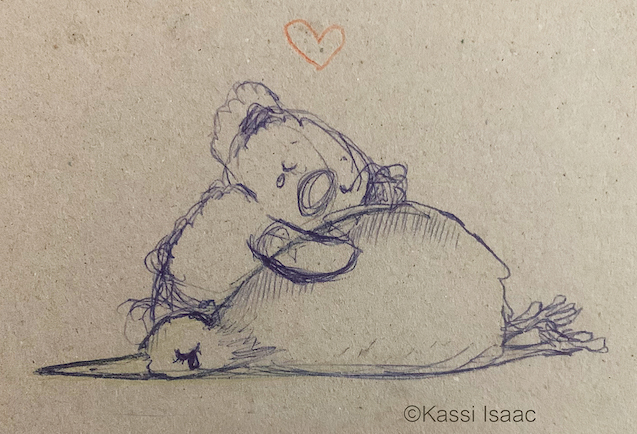
Why did you post the image?
It was for anyone who was feeling despair or needed a cuddle, anyone who had no words, anyone who didn’t know what to think or do… for the people mourning, for the people in shock. For anyone who needed to know there was still goodness out there and that “we care”.
What do you think of the public’s response to the massacre? Does it give you hope?
I think Jacinda Ardern’s response to the whole event has given me the most hope. We need more leaders in the world like her, who are compassionate above all else. I have so much respect for her.
@kassiisaac

‘Initially, I had feelings of guilt’
Shaun Yeo is an illustrator who lives in Southland, New Zealand
When did you create the illustration of the crying kiwi? How long did it take?
I created it shortly after Prime Minister Jacinda Ardern’s address to the nation, about 5pm last Friday. All up, it probably took 20 to 25 minutes to create. I remember spending a lot of time drawing the Kiwi’s crying eye but the rest came together very quickly. I like to work fast anyway because it lends my work an energy that I like, and I wanted it to have that feeling of rawness to it.
What were you trying to express?
Like most New Zealanders, I was feeling shocked and saddened by the events. I was at my drawing desk following the news coverage on my phone and tablet. I was working on a commission for a client and really couldn’t focus on it. I remember thinking, ‘This is not us, we are Kiwis, we don’t do this.’ I pulled up a clean page and started drawing.
How did you feel after you’d created it?
It’s hard to say but it just felt right. Really, I was just doing what I had done thousands of times before. But when it was finished I sat back and really looked at it… I knew it was a strong piece.
How quickly was the image shared? Did you see immediately that it was being widely disseminated?
No, I put the image on my social media accounts and then left to get ready to meet some old work colleagues for a meal. About an hour later, when I got to the restaurant one them asked if I had seen what was happening to the Kiwi post. I took a look and it was just pinging up and up.
How has it felt for you?
I think emotionally it has been overwhelming. Initially, I had feelings of guilt. Every cartoonist dreams of having their work seen by millions but, due to the nature of the event and how tragic it is, you have mixed emotions about being part of it. But when the messages of love and thanks started coming through from people all over the world, I realised that people have found some solace in the image.




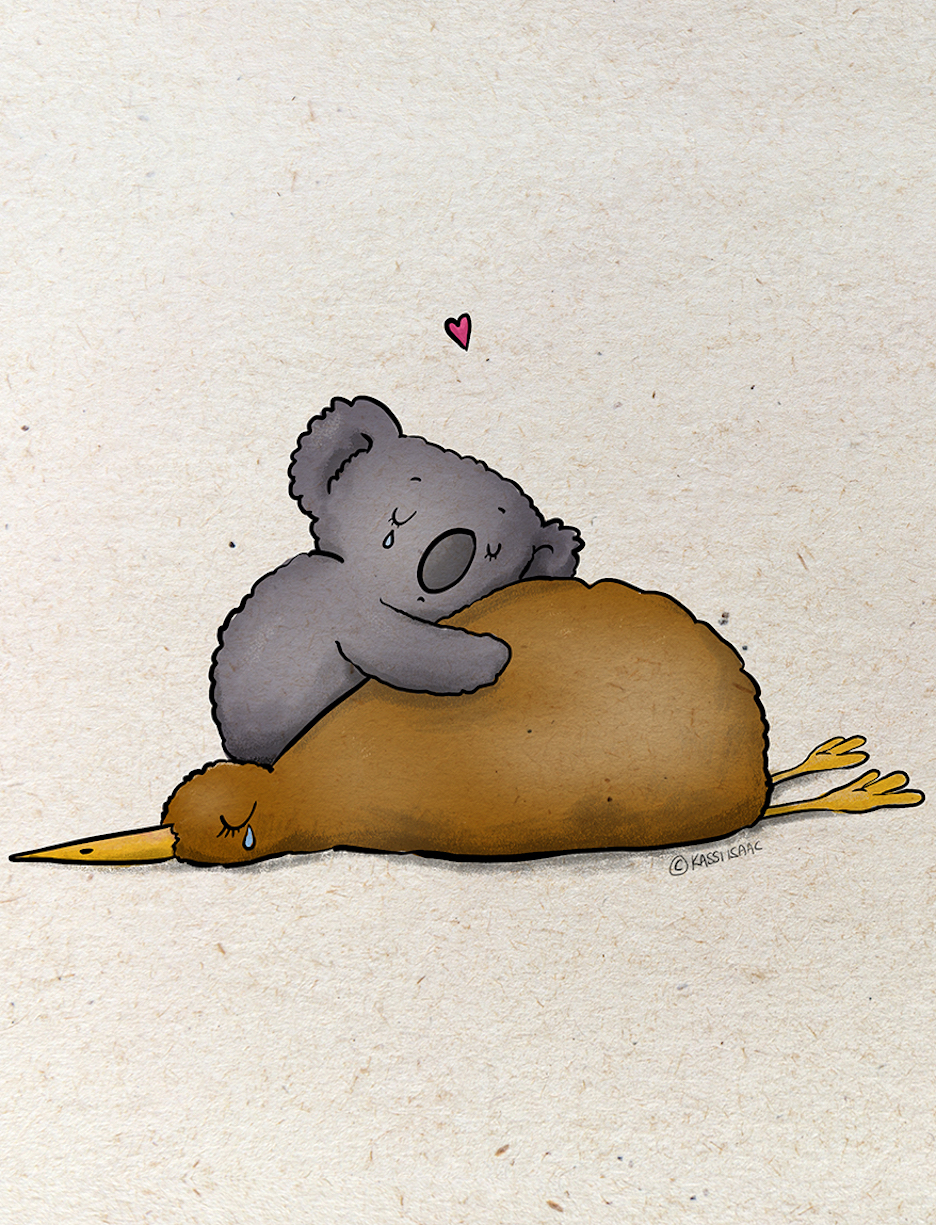
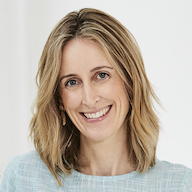


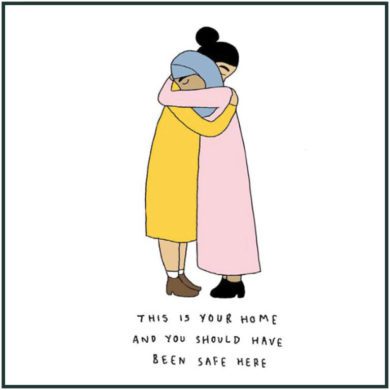
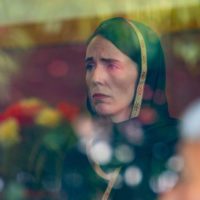

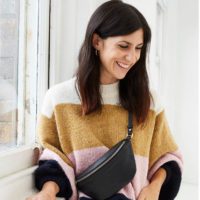
4 Comments